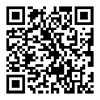NEWS
NEWS
- Tianjin BST Import and Export Co., Ltd.
- What are the precautions for the safe use of high pressure hoses?
CONTACT US
NEWS
What are the precautions for the safe use of high pressure hoses?
- Author:admin
- Time:11/13/2020 7:10:17 PM
- Views:719
1, the hose can only be used to transport the designed medium.
2, the hose is strictly prohibited to use more than the designed working pressure.
3. The temperature of the medium transported by the hose should not exceed the requirements of the factory. Oil is -40℃ to 120℃, air is -30℃ to 50℃, water emulsion is 80℃ or lower.
4, the hose should be kept clean, internal flushing should be clean. Prevent foreign matter from entering the tube cavity, hindering fluid transfer and damaging the equipment.
5, the layout of the hose should be away from the heat, when needed, you can install devices such as casing or insulating plate to avoid heat deterioration of the hose.
6, when the hose and mechanical surfaces cross or friction, protective measures should be taken to prevent the hose burst due to wear and tear.
7, the use of hose as far as possible to keep the site straight, must be bent, should avoid sharp bends, bending radius should not be too small, should be greater than 9 times the outside diameter. The connection between the hose and the joint should have a straight section greater than 2 times the outer diameter of the tube.
8. Do not twist the hose during installation. A slight twist of the hose may reduce its strength and loosen the joint. The fitting should be fastened to the hose instead of fastening the hose to the fitting.
9. The hose should be installed to avoid being in a tight condition and must have a certain length allowance to keep the hose slack.
10. During daily use, the hoses must be protected to prevent them from being crushed and bumped.
11. Operate and control the valve to moderate the pressure on the hose and prevent the hose from bursting.
12, the hose must use matching "U" card, seal, two-way, three-way, etc., is strictly prohibited to use other alternatives.
13, hose leakage, rupture, expansion, joint card corrosion, broken lines, rubber layer aging cracks, etc., must be replaced immediately.
14. In the process of daily use, inspection and replacement must be strengthened.
15. Newly invested or replaced hoses must be tested and certified before use. Only after qualified can be used. Personnel are not allowed to approach during the test
- Previous:Nothing
- Next:Tianjin BST Import and Export Co., Ltd.

